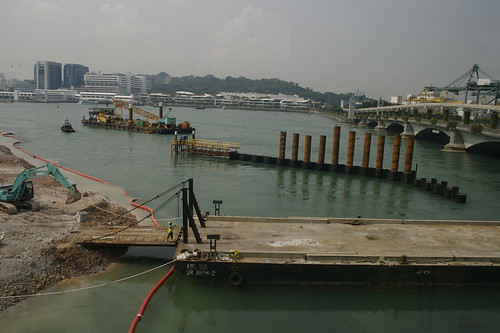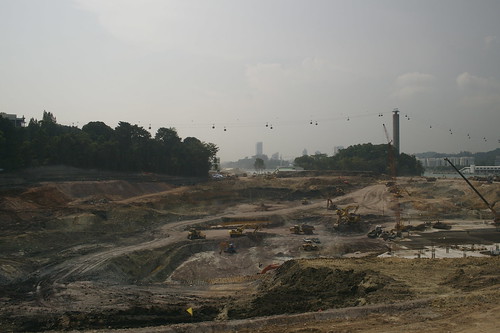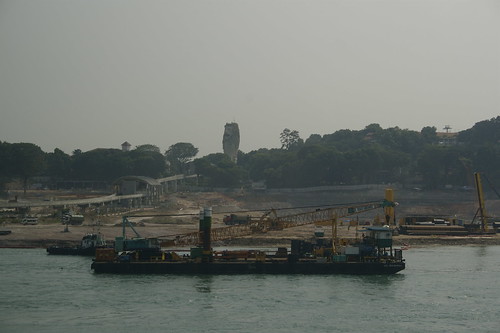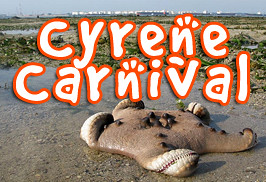Last year, as part of an assignment for an Environmental Management and Assessment class I was taking, my group and I did an environmental impact assessment (EIA) of the integrated resort at Sentosa.

The future Integrated Resort at Sentosa
It is important to note that this is in many ways a hypothetical EIA. There were assumptions made and we did NOT do any baseline surveys or studies. Information were all taken from other sources and projected for this site.


Reclamation of Sentosa to expand the land area for the Integrated Resort
As our environmental impact assessment was done after development has already started, we had to work on several imaginary assumption as to the conditions to which we were given the "project". While we were not able to provide data as to the amount of rare or endangered species lost, do realize that the emphasis in an EIA is on analyzing the impacts and coming up with mitigations.

"Scorched earth" styled approach to development
Having done a rather detailed background understanding of the area which is detailed in the presentation slides, we realized that essentially natural coral reefs were being buried just to create marine park, aquarium and artificial coral reef! The marine areas were being filled in with sand and then dug up again to have a venice-like setting with waterways and promenades.

Reclaiming the coastline of northern Sentosa only to turn it later into a water-themed resort
On top of that, the areas that are nearest to the encroached forest inland is going to become a spa area. As such we propose a building design that minimizes the cutting of the trees. The scorched earth, raze to the ground then build up again type of developmental approach is definitely more destructive than necessary. Architectural and building sensitivity to the existing landscape can mitigate the impact of the development greatly. On top of that it would also increase the value and reputation of the property and business.

You can see the existing sediment screens (marked by the orange line bouy) used as a form of mitigation to the impact of the reclamation but how effective is it compared to not reclaiming at all?
Additionally, EIA are supposed to have a very comprehensive public participation component as well. The actual EIA done of the development both had a very skewered term of reference (the question or issue of concerned that is examined by the EIA) as well as a poor excuse of public engagement. In fact, we had to lock away our phones, cameras and computers when we went to view it. Pen and paper only!
Either way, we can only hope that as the development is still in varying stages of construction, there is still opportunity for changes to be made to the design, such as incorporating more ecologically friendly features.
More photos of the reclamation and development works can be seen here.


 I can be contacted at
I can be contacted at 







1 comment:
Thanks for sharing your findings. It must have taken alot of effort on your team to come up with this hypothetical EIA. Still, I would like to congratulate you and hope it opened your eyes to what is ailing nature conservation today in Singapore. I have one word to describe EIA here - farcical. I am especially glad you single out how a natural coral reef has been buried to make way for a marine park, aquarium and artificial coral reefs. That's why - FARCICAL indeed. May I add to the record that our own marine biologists from the esteemed ground of scholarship - our local university - did nothing else but put their 'best fins' forward in supporting this ludicruous episode of our Singapore history. Applauds please!!
Post a Comment